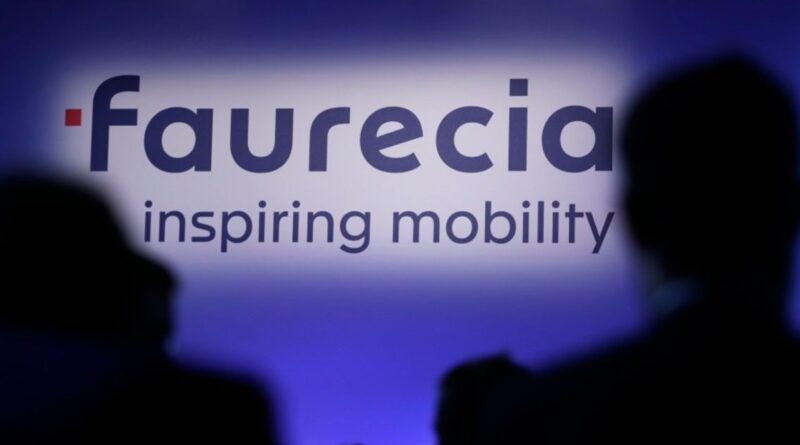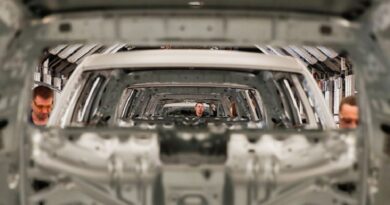Faurecia completes $6 billion acquisition of Hella to boost EV, self-driving businesses
PARIS — Faurecia has completed its acquisition of a controlling stake in lighting supplier Hella in a 5.3 billion euro ($5.95 billion) deal that is one of the biggest in the European auto parts industry in the past three years.
Faurecia will hold 79.5 percent of Hella, the Paris-based supplier said Monday. The deal included 60 percent of Hella shares from a pool of family shareholders, and 19.5 percent from the settlement of a public takeover offer.
The pool of Hella family shareholders will hold the largest bloc of shares in the combined company, with a 9 percent stake, Faurecia said.
The Paris-based supplier won a bidding war in August for Hella, with other contenders including Mahle, Plastic Omnium and the German brake specialist Knorr-Bremse. At the time Faurecia said the transaction represented an estimated total enterprise value of 6.7 billion euros ($7.90 billion) for 100 percent of Hella.
Faurecia makes seating, interiors and cockpit components, and electronics under its Clarion subsidiary. The company said in August that the combined group would be better placed to sell electric mobility products and automated driving services to the industry.
Analysts say that Hella’s business making power and battery electronics and radar sensors for advanced driver assistance systems should be a good fit with Faurecia’s ambitions.
Faurecia CEO Patrick Koller said Monday in a statement that the newly enlarged combined company would seek to generate 33 billion euros in revenue by 2025.
That revenue forecast represents “a significant leverage,” he said, adding, “We will now work together effectively to immediately start implementing the significant and confirmed synergies that have been identified and create sustainable value for all our stakeholders.”
Faurecia had earlier estimated that synergies could reach 300 million to 400 million euros of sales by 2025, and cash-flow optimizations are expected around 200 million euros per year on average from 2022 to 2025.
The deal comes as automotive suppliers position themselves to take advantage of industry mega-trends such as electrification, connectivity and autonomous driving, by spinning off or selling “noncore” assets.
Hella’s family shareholders said last year, in seeking a buyer, that the company had reached a size that required external competence beyond the founding family.
Other notable supplier acquisitions in recent years include ZF Friedrichshafen’s purchase of Wabco for more than $7 billion in 2019 and Qualcomm’s acquisition of Veoneer for $4.5 billion, announced last October.
M&A activity peaked in the auto industry in 2021, with a record $123.5 billion in dals in the first three quarters alone, according to the law firm of White & Case. However, the majority of that was linked to reverse SPAC mergers, White & Case said.
Trading in Faurecia had been suspended Monday pending completion of the deal. Hella’s results will be consolidated into Faurecia’s starting on Tuesday.
Faurecia, based in Nanterre, France, ranks No. 8 on the Automotive News list of top 100 global suppliers, with worldwide sales to automakers of $17.59 billion in 2020.
Hella, based in Lippstadt, Germany, ranks 41st, with automotive sales of $5.47 billion. It is best known for lighting products, but also makes sensors, converters and power steering components.
Faurecia said Monday that the combination of the two companies would create the seventh-largest automotive supplier. However, based on Automotive News’ calculations of 2020 revenues, Hyundai Mobis, with $25.1 billion in sales in 2020, would remain in seventh position.
Hella traces its roots to 1889. The Hueck family has controlled Hella since 1923 and took the company public in 2014. It sold its front-camera software business to Volkswagen Group in February 2021.
Faurecia began life in 1997 as the product of a friendly takeover of seating specialist Bertrand Faure by Peugeot SA’s equipment arm, ECIA.
PSA Group divested its holdings in Faurecia as part of the agreement with Fiat Chrysler Automobiles that created Stellantis in January 2021.
At the time, Koller suggested that Faurecia was looking for M&A targets to help reinforce its business as a standalone company. “The upcoming change in Faurecia’s shareholding structure will offer new opportunities for value creation,” he told analysts in February 2021.
Those opportunities included the possibility of additional M&A activity, Koller said. Faurecia had committed 60 percent of its net cash flow to deleveraging and potential “bolt on” activity, meaning acquisitions or collaborations.
Source : Autonews.com




